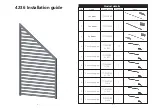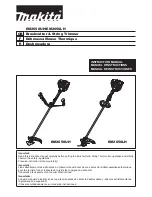
13
-
9
H
-
Axle Setpoint and Position:
The Axle Setpoint is the rear axle cylinder height that the system will target when in
“
AUTO
”
mode.
This number represents the average stroke length of the left and right axle cylinders. When
“
AUTO
”
mode is entered, the axle cylinders will move to meet the selected set point. To level the harvester,
the cylinders will move up and down while maintaining an average stroke distance of the setpoint. This
means that if a difference of 2 inches is needed between the two cylinders to make the machine level,
one cylinder will move up 1inch from the setpoint and the other will move down
1”
from the setpoint.
There are four different setpoints that can be selected: 2 inches, 4 inches, 6 inches, and 8 inches. The
setpoint can be changed by selecting the setpoint softkey, which will cause a pop
-
up list to appear
from which the setpoint can be selected (Figure 13
-
20). There is also a softkey that when pressed will
cycle through the four setpoints (Figure 13
-
21). The setpoint can also be changed from the setting
screen. The typical setting will be 2 inches for most harvesting. Selecting a higher number will increase
the angle the beets are required to climb across the grabrolls and jump chain, which increases the
amount of cleaning time for the beets.
To either side of the setpoint number on the main page is a bar graph that shows the instantaneous
location of the cylinders within their stroke. Due to physical limitations in the axle, there can only ever
be a maximum of a
4”
difference in the cylinder strokes. On each bar graph is a dashed box that repre-
sents the limit of movement each cylinder will be able to move based on the current setpoint.
Figure 13
-
19: Axle Setpoint & Cylinder Graph
Figure 13
-
20: Setpoint Cycle Softkey
Figure 13
-
21: Setpoint Pop Up List
I
-
Auto Mode Icon:
Once all the requirements to enter
“
AUTO
”
mode have been met, (see section 13.1.4, part A) there
are a few different ways to enter
“
AUTO
”
mode. On the main page in the bottom right there is an
“
AUTO
”
icon that can be selected (Figure 13
-
22). There is also a softkey to enter
“
AUTO
”
mode (Figure
13
-
23). The final way to enter
“
AUTO
”
mode is to use the joystick, (see joystick section). All these op-
tions operate in an on/off capacity. One press of the softkey will enter the system into
“
AUTO
”
mode
and the next will exit the system out of
“
AUTO
”
mode.
Figure 13
-
22: Auto Toggle
Figure 13
-
23: Auto Toggle Soft Key
Summary of Contents for 2720
Page 2: ...i This page is intentionally left blank ...
Page 4: ...iii This page is intentionally left blank ...
Page 49: ...7 20 Figure 7 38 Rear Scrub shown with Scrub Chain Rollers and Head Shafts 7 23 Rear Scrub ...
Page 63: ...11 7 1 2 3 4 5 6 7 A B B 1 2 3 5 5 4 7 6 ...
Page 64: ...11 8 ...
















































